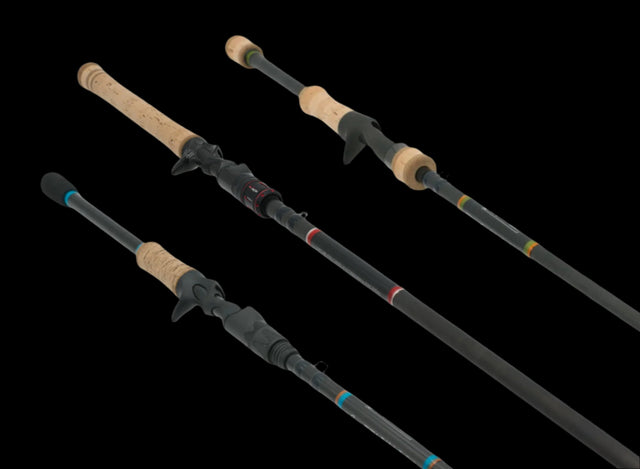Decoding Bass Rod Actions:
Fast, Moderate, Slow Explained for Specific Lures
Written by John Boullt · Rev.1 Sept 15, 2025
"Alright friends," let's dive into the slightly confusing but mighty important world of bass rod actions. Fast, moderate, slow – sounds like we're describing fishing conditions, right? But understanding these terms is the key to unlocking your lures' full potential and landing more bass.
The golden rule? Pair your rod action with a complementary lure. It's like finding the perfect dance partner. When you get it right, you'll be landing more fish. But mismatch them, and you might as well be trying to thread a needle in the dark.
Here's the deal: you want accurate casting, enticing lure action, strike-inducing power, and solid hooksets. Choosing the right bass fishing rod action is crucial. And it's not just about the rod action. Line type and power rating play huge roles too. Imagine trying to pull a truck with dental floss – that's what wrong line selection feels like. Too heavy kills your lure's action, too light and you'll lose fish.
Then there are the conditions! Bass fishing in thick, gnarly cover demands a different approach than skipping lures under docks. Heavy cover requires a powerful rod to wrench bass out. Open water? You might prefer finesse for delicate presentations and longer casts. Technique specific bass rods really shine when you're skipping under docks – accuracy and responsive tips are key.
Now, let's get specific. (Remember, this is my opinion mixed with generally accepted fishing wisdom. Your experience may vary, and that's totally cool!)
Texas Rigged Worm/Creature Bait (Heavy Cover): Fast action casting rod or extra-fast action, heavy power. 50-65 lb braid. When a bass hits your Texas rig in thick cover, you need to haul it out immediately. Heavy power casting rods give you the backbone, and braid provides no-stretch muscle.
Crankbaits (Medium Diving): Moderate action, medium power bass rods with fluorocarbon or mono (12-15 lb). This lets fish really eat the crankbait, and the rod's flex prevents pulled hooks. Crankbait rods with this action work great on ledges and drop-offs.
Topwater (Walking Baits): Moderate-fast action, medium-heavy power with braid (30-50 lb). You need responsive tip action for proper walking motion, and braid ensures solid hooksets on explosive strikes.
Jerkbaits: Fast action, medium power with fluorocarbon (10-12 lb). Fast action gives you that irresistible jerking motion, and fluoro helps get the bait down deep.
Spinners/Chatterbaits: Moderate action, medium or medium-heavy power with fluorocarbon or mono (12-17 lb). This action absorbs vibration and prevents pulling hooks on hard fighters.
Finesse Worms (Drop Shot/Shaky Head): Extra-fast action, light/medium-light power with fluorocarbon (6-8 lb) or braid with fluoro leader. Finesse spinning rods excel here. Sensitivity is everything – you want to feel every tick and twitch.
So there you have it – a practical guide to pairing rod actions, lures, lines, and power. Remember, fishing is about experimentation. Don't be afraid to try new things and break the 'rules.'
The best bass fishing rod setup is the one that puts fish in the boat and brings a smile to your face. Now quit reading and go test these theories!
More stories







